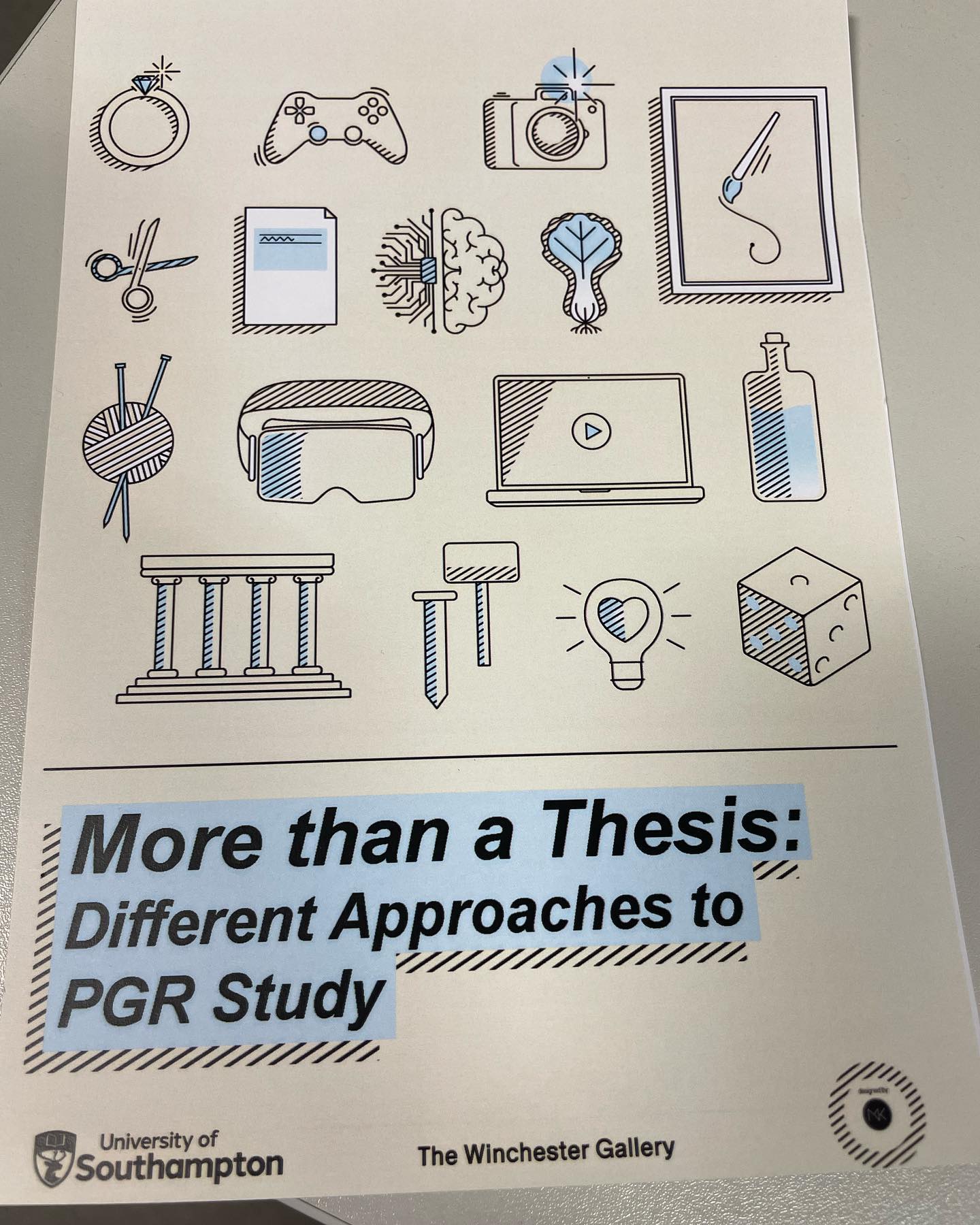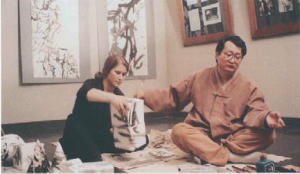 A collective group exhibition organised by Winchester School of Art (WSA) postgraduate research students was held in The Winchester Gallery between 29 June – 26 July 2023. This was the first collective PGR show at the Gallery, facilitated by Professor Louise Siddons, and curated by researchers Yimeng Li and Elio Hao, bringing together the work of 12 students and visiting scholars.
A collective group exhibition organised by Winchester School of Art (WSA) postgraduate research students was held in The Winchester Gallery between 29 June – 26 July 2023. This was the first collective PGR show at the Gallery, facilitated by Professor Louise Siddons, and curated by researchers Yimeng Li and Elio Hao, bringing together the work of 12 students and visiting scholars.
The works were created specifically for the exhibition and aimed to represent not only the artists research but their thoughts and processes that they apply to their work, providing a platform to celebrate their daily lives, interests, and voices.
A virtual tour of the exhibition, produced by Lian Pan, is now available:
The exhibition provided a unique opportunity to bring visibility to the experiences and achievements of the students, while fostering a sense of belonging and collaboration to the WSA, University community and wider audiences in this public exhibition.
A broad variety of work was showcased utilising a range of mediums and practices, including painting, installation, sculpture, textile work and the AI generation of texts and images. Topics embraced papercut, silent poetry Queerness and dream worlds, hobbies as methodology, devices that articulate actor network theory, recreations of a WWII desk, abuse, passions, silver stickers, desire, co-curation, and cultural rootlessness of international students and the ‘unknown’ vegetable, Pak Choi.
 Curators Yimeng and Elio explained:
Curators Yimeng and Elio explained:
“Curating this exhibition has been a great challenge for me, as it was the first time we curated an entire gallery space within such a short period. Despite the difficulties, the experience has been incredibly valuable, and we have learned so much from this journey. As a curator, I am delighted to have been able to contribute my knowledge and skills to the PGR community and to WSA. It is great to see our efforts making a positive impact and increasing the visibility of our community. This experience has not only strengthened my expertise as a curator but also reinforced the importance of teamwork and collaboration in creating something truly exceptional. It has been great to work with Elio too. Thanks a lot for everyone who helped and assisted us!” Yimeng Li
“This is the last year of my PhD, and I have been a student rep for the previous three years, so I think, and I know this is the first time we (the WSA PGRs) have had an opportunity to make and show work in a public space. WSA is an art school, and we pretty much all deal with art or design-related research, and I’m very grateful that the university offered us this tremendous opportunity and the support from many University departments. This is my first time being a curator, and I need to thank Yimeng for taking me on board. It feels very empowering. “Elio Hao
We hope this will become an annual event and would welcome collaborations with PGRs across the University of Southampton.
Text courtesy of WSA Rotunda

